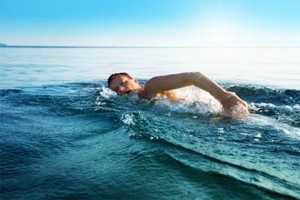 Personally I am not much of a swimmer though I would like to be. It is one of the many projects on my list. I took a swimming lesson a couple of years ago and told the instructor about an incident in my childhood where I was pushed off a pool sliding pond and sunk to the bottom to be rescued by a lifeguard—for which I credit my lack of swimming. He replied with a shrug that everyone has such a tale implying that he wasn’t all that interested in my sob story.
Personally I am not much of a swimmer though I would like to be. It is one of the many projects on my list. I took a swimming lesson a couple of years ago and told the instructor about an incident in my childhood where I was pushed off a pool sliding pond and sunk to the bottom to be rescued by a lifeguard—for which I credit my lack of swimming. He replied with a shrug that everyone has such a tale implying that he wasn’t all that interested in my sob story.
This past summer my family was at Cape Cod and I watched my son leave a noodle in the water and head back to the beach. As the noodle wasn’t ours I felt a responsibility to go after it. As I swam out, it kept getting farther and farther away. When I finally caught up to it and turned around I was both shocked at how far I swam and thankful I had the noodle to help me back in. I was wiped.
It was a great workout even though I am the poorest of swimmers, keeping my head above water the whole time and moving at a snails pace. But it was also really fun and made me want to get into swimming as I am always looking for fun ways to exercise.
My issue with swimming lies in the average person thinking that it is great exercise simply because they swim. This is a common misconception about yoga as well. While doing yoga is good for you in general, doing it with poor technique can and often does hurt in the long run.
My simple take is that if you have bad posture, you swim with bad posture. And if you swim without employing some sort of technique, you are most likely swimming badly. I’m not sure why people don’t make this leap of understanding more often but they don’t. I have worked with a number of people who took a break from doing yoga because of an injury only to be befuddled when that injury persisted when they were swimming.
The most common problem with swimming is a similar issue that arises with posture. Most people stand with a tucked pelvis which forced the legs forward and flattens the lumbar spine. But it is not all that easy to swim that way as the kicking action required forces the pelvis to be in a decent position.
When I put someone who tucks their pelvis habitually into what I deem the right posture, very often it creates an excessive curve in the lower spine that can feel uncomfortable. This same excessive curve is often happening to the swimmers spine.
If you are swimming correctly your lower back should not dip under the water over and over again. This is a habitual occurrence with swimmers with poor technique. Every stroke creates a hyper lordosis or arch in the spine as you cruise through the water. This happens from the combination of poor land posture and the effort to kick the legs up out of the water.
If you know that this happens to you, take some time to work on keeping a more solid spine that doesn’t collapse in the middle to lower back with every glide through the water.
***
